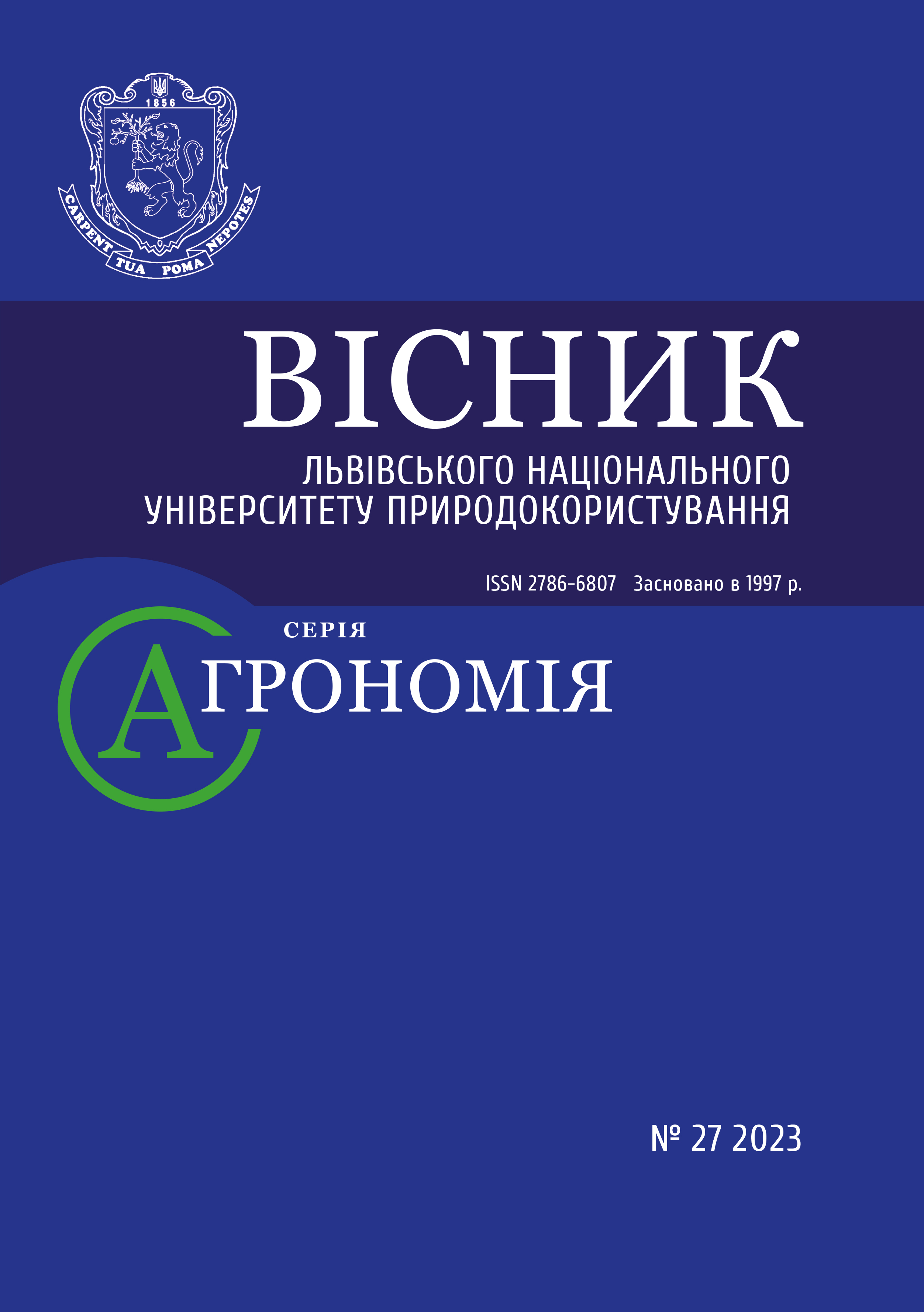THE EFFECT OF SOWING RATE ON AMARANTHUS YIELD
DOI:
https://doi.org/10.31734/agronomy2023.27.081Keywords:
amaranthus, sowing rate, yield, growthAbstract
Amaranth is an agricultural crop that has been known for more than two thousand years. Despite this, the technology of growing the crop has not been developed sufficiently. Field studies were conducted on dark gray podzolized soil in the western forest-steppe to establish an optimal amaranth sowing rate. The research was conducted over a few years, and the weather conditions during this time were quite contrasting and differed from average many-year data both in terms of temperature and precipitation. In 2020 and 2022, the average temperature during the growing season was 15.3°C, which is 0.5°C higher than the long-term data, while in 2021, it corresponded to the average long-term data. In 2020, the amount of precipitation was 129 mm more than the long-term average during the growing season, and in 2021, it was 73 mm more, whilst the value for 2022 was 28 mm higher. The study examined six sowing rates: 0.2, 0.4, 0.6, 0.8, 1.0, and 1.2 million similar seeds per hectare.
It was established that the rate of sowing had an impact on the field germination of amaranth. At the sowing rate of 0.2 million/ha, the field germination was 70%, but it decreased to 60% at the sowing rate of 1.2 million/ha, which is a 10% decline. The density of plants was higher in the variants with higher seeding rates. At the seeding rate of 0.2 million/ha, there were 14 plants in the seedling phase, while at the seeding rate of 1.2 million/ha, the number of plants increased to 72 pieces/m2. The survival of plants during the growing season sharply decreased when the crop density increased, i.e., from 86% at the sowing rate of 0.2 million/ha to 45% at the sowing rate of 1.2 million/ha. Therefore, before harvesting, the density of plants was leveled off and equaled 12–32 plants per m2. The optimal combination of the main elements of the structure was 21 plants/m2 and 26 plants/m2, and the weight of grain from one plant was 20.4 g and 16.1 g, respectively. The highest yield of amaranth grain of the Kharkivskyi 1 variety was obtained at the sowing rate of 0.4 million/ha and 0.6 million/ha, which yielded 4.28 t/ha and 4.20 t/ha, respectively. An increase or decrease in the sowing rate leads to a drop in the yield level.
References
Dudka M. I. Agrotechnological foundations of increasing the productivity of annual forage crops in the Northern Steppe of Ukraine: Doctor of Agricultural Sciences 06.01.09. Dnipro, 2020. 480 p.
Dudka M. I. The influence of the method of sowing, the rate of sowing and the level of mineral nutrition on the productivity of paniculate amaranth. Crop peoduction and soil science. NUBIP. Kyiv, 2020. Vol. 11, No 1. P. 23–32.
Husiev M. H., Voitashenko D. P. Productivity of grain amaranth depending on the method of sowing and the rate of sowing. Irrigated agriculture. Kherson: Ailant, 2006. Vol. 46. P. 109–112.
Kohut I. M., Kohut S. H. The influence of thickening on the intensity of growth and development of amaranth plants in the southern Steppe. Taurian scientific bulletin: series of agriculture, plant growing, vegetable growing and melon growing. 2013. No 86. P. 39–42.
Kolawolе E. L., Sarah O. A. Growth and yield performance of Amaranthus cruentus influenced by planting density and poultry manure application. Notulae Botanicae Horti Agrobotanici Cluj-Napoca 2009. No 37 (1). 195–199.
Lykhochvor V. V., Petrychenko V. F. Plant growing. New technologies for growing field crops: textbook – 5th ed., corrections, additions, additional issue. Lviv: “Ukrainian Technologies” Scientific Research Institute, 2022. 808 p.
Marin D. I., Bolohan C., Mihalache M., Rusu T. Research on Amaranthus cruentus L. and Amararanthus hypochondriacus L. species grown in south-eastern Romania (Moara Domnească – ilfov). Scientific Papers, UASVM Bucharest, Series A. 2011. Vol. LIV.
Rakhmetov D., Rybalko Y. Amaranth reminds of itself again. Proposal. 2005. No 2. P. 67–68.
Shelest V. K., Pidpalyi I. F., Bernadskyi I. V. Seed sowing rate, row width and sensitivity to irrigation of amaranth panicle in the Central Forest Steppe. Problems of cultivation, processing and use of amaranth for fodder, food and other purposes: the first All-Ukrainian science and practice. conf. Vinnytsia, 1995. P. 40–41.
Voitashenko D. P. Optimizing elements of the technologies of grain amaranth growing in the conditions of the southern Steppe of Ukraine: extended abstract of the dissertation for PhD in Agricultural Sciences: 06.01.09. Kherson, 2008. 16 p.


